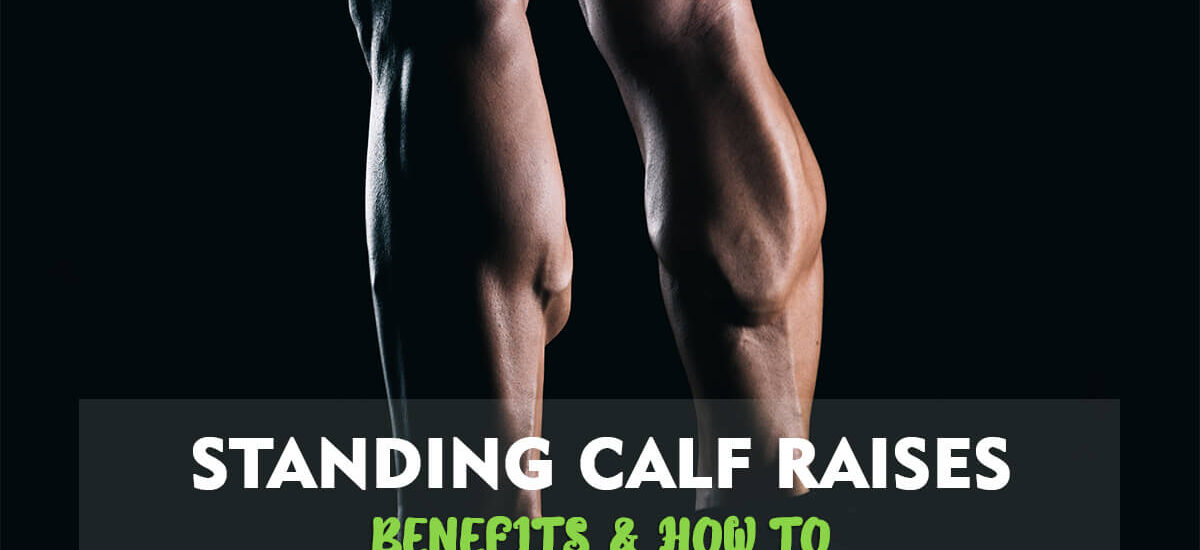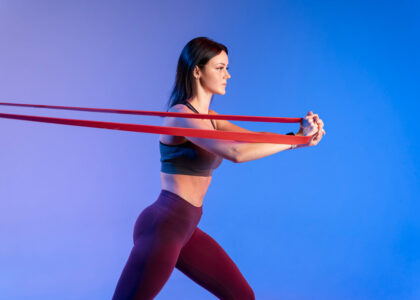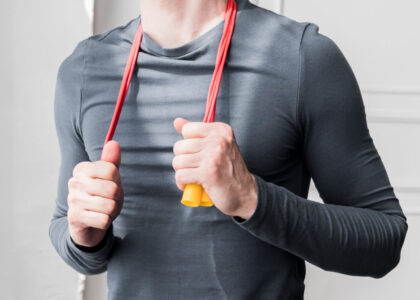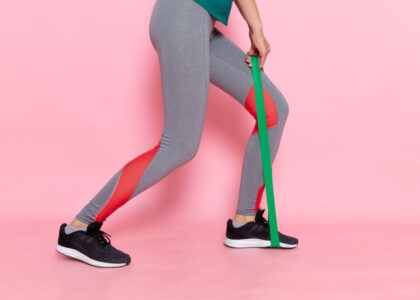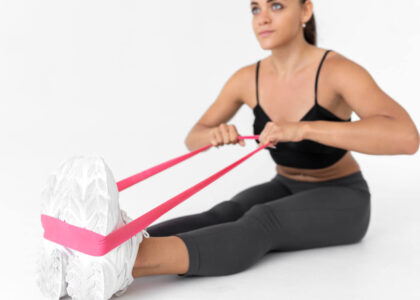CHEST | SHOULDERS | BICEPS | TRICEPS | LEG | ABS | NUTRITION
Calves are the muscles at the back of your legs; they are essential muscles that play a significant role in how strong your lower body looks. These small muscles have a considerable role in our daily routine and when we play activities. If you’re looking to tone the legs and give them the attention they deserve, you’ve come to the right place.
In this blog, we’ll dive deep into calf training with a particular focus on a powerful exercise that is highly effective: the standing Calf raises.
Before diving into the details of performing the perfect standing calf raise, let’s know why strong calf muscles are more important than you might think. Are you ready to unleash the full potential of your lower legs? Let’s begin.
The Benefits of Strong Calf Muscles
When we think of strength training, it’s easy to become lost in images of chiselled abs and bulging biceps. We also think of solid quads. But, it’s time to pay attention to the muscle group that usually isn’t considered: the calves. These underestimated muscles offer various benefits that could significantly improve your fitness and overall health.
1. Improved Athletic Performance
Muscular calves are vital for all kinds of activities and sports. It doesn’t matter if you’re a runner, an athlete, a dancer or even a hiker; your calf muscles are vital for generating power and maintaining stability. They help you push off the ground to keep your balance and absorb shocks during intense activities. So, well-developed calves are necessary if you’re looking for peak athletic performance.
2. Improved Lower Body Functionality
Calves are crucial in everyday activities such as standing, walking, and climbing stairs. Think about it: every step requires your calf muscles to move and push you forward. With more muscular calves, you’ll notice increased ease and efficiency in these basic movements, making daily life a more enjoyable experience.
3. Aesthetic Appeal
Let’s pay attention to the aesthetic benefits of solid calves. If they’re well-developed, they can provide an attractive and balanced look for your legs. Whether sporting shorts or displaying your body in a fitness contest, well-defined calves can contribute to an engaging and confident appearance.
4. Injury Prevention
Building strength in your calf muscles isn’t just about looking nice; it’s also about ensuring your safety. Muscular calves provide more support for your ankles and knees, decreasing the chance of injury during physical exercises. They assist in stabilizing your lower body and distributing the impact forces more efficiently, which reduces the stress on ligaments and joints.
5. Balanced Muscle Development
While we tend to concentrate on the large muscle groups, ignoring the smaller ones can cause imbalances and injuries. Well-rounded fitness is about caring for every aspect of your body, including your calves. When you incorporate calf training into your daily routine, you ensure that your entire lower body is healthy and well-balanced, helping to improve overall fitness.
Understanding the Standing Calf Raise
Standing calf raises are an easy but highly effective exercise that targets the muscles of your calves, especially the gastrocnemius and soleus muscles. It is performed by lifting your weight onto the balls of your feet, effectively engaging your calf muscles to perform the movement. While it might seem straightforward, mastering the standing calf raise can significantly affect your calf development and overall lower body strength.
Why Choose the Standing Calf Raise ?
You might wonder why the standing calf raise should be in your calf training routine. It’s because the vertical calf raise is a compound movement that replicates the natural movement of lifting the toes of your feet. This means it engages multiple muscle fibres and provides an extensive workout instead of isolation exercises.
Another advantage of standing Calf raises is their flexibility. It can be done virtually everywhere – in the gym, at home, or in the line. All you require is a stable base to stand on, making it a convenient exercise that you can add to your routine.
What to Expect ?
Before you begin the first set of standing Calf raises, you must know the muscles you’ll be working on. The most important muscles you’ll be targeting are the gastrocnemius and soleus muscles, which contribute to the distinct shape of your calves.
- Gastrocnemius: This muscle is the most prominent and visible in the calves. It’s responsible for the noticeable bulge when you turn your toes.
- Soleus: Located underneath the gastrocnemius muscle, the soleus depths your calves. It’s also activated when you bend your knees, making it essential for running and squatting.
Engaging each of them during an exercise called standing raises provides your calves with a complete workout that improves their strength, shape, and general appearance.
Perfecting Your Form
A proper technique is crucial when it comes to standing a Calf raise. To ensure you’re getting the most out of this exercise and minimizing the chance of injury, make sure you follow these guidelines:
- Keep your feet straight and hip-width apart. You can place your hands against a wall or sturdy surface for stability.
- Keep your back straight and engage your core muscles. Be sure to maintain a good posture throughout the workout.
- Slowly lift yourself onto the balls of your feet by pushing between your toes. Lift your heels as high as you can while maintaining control.
- Hold the raised position briefly, feeling the contraction in your calves.
- Lower your heels and return to the starting position in a controlled manner.
- Repeat the movement until you reach your desired number of repetitions.
Muscles targeted by standing Calf Raises
Now that you know what the standing calf raise entails, it’s time to delve deeper into the muscles that this exercise targets. Knowing which muscles are targeted during the move will allow you to appreciate the full effect of the standing Calf raise on the strength of your lower body and aesthetics.
Primarily Muscles: Gastrocnemius and Soleus
The two primary muscles engaged during the standing calf raise are the gastrocnemius and the soleus. These muscles work together to enable you to get on your toes and execute the move efficiently.
- Gastrocnemius: As mentioned earlier, the gastrocnemius muscle is the most significant in the rear of your lower leg. If you raise your heels in the Calf raise, the gastrocnemius expands to create that distinct bulge at your Calf’s bottom.
- Soleus: Located beneath the gastrocnemius, the soleus is critical to the Calf’s shape and strength. Although it does not have the same bulge as the gastrocnemius, it is crucial in ensuring stability and assisting in movements like running, walking, or jumping.
Together, these muscles are the basis of your Calf’s development and contribute to your lower body’s performance and appearance.
Secondary Muscles: Plantar Flexors
Alongside the soleus and gastrocnemius muscles, the plantar flexors are also involved in standing Calf raise. The plantar flexors comprise smaller muscles, such as the tibialis posterior and the flexor hallucis longus. These muscles help control movement, maintain balance, and stabilize your ankle joints.
By focusing on both the primary and secondary muscles, the standing calf raise provides a complete exercise that doesn’t just improve the look of your calves and increases your lower body strength and stability.
Proper Technique: How to Perform Standing Calf Raises
Learning the correct technique of the standing Calf raise. It may appear straightforward, but focusing on the details will significantly impact the results you achieve. So, let’s begin and go through the step-by-step procedure to perform standing Calf raises in a precise and effective way.
Step-by-Step Guide: Standing Calf Raises
- Position Yourself: Stand up with your feet about hip-width apart. You can place your hands on a wall or a solid surface in front of you to help stability. Engage your core muscles to maintain a good posture during the exercise.
- Start the Movement: Begin by slowly lifting the soles of your feet. Lift your heels off the floor by pushing through your toes. Make sure to control your movement and do not use momentum.
- Full Extension: Continue to lift until you’re standing on tiptoes, achieving the highest point of the movement. Make sure to contract your calf muscles at the top for a brief moment.
- Hold and squeeze: Stay in the raised position for a second and feel the tightening of your calves. This is where the magic happens because your muscles are putting in the effort to support the weight of your body.
- Lower Gently: Lower Your Heels Slowly back to their starting position in a controlled manner. You will feel the tension in your calves as you lower your heels.
- Complete the Reps: Repeat the movement for the desired amount of repetitions. You should aim for three sets of between 12 and 15 reps before you begin while adjusting the weight and reps based on your fitness level.
Form Tips for Success
- Avoid Bouncing: Maintain a controlled pace throughout the exercise. Using momentum or bouncing reduces the efficiency of the workout.
- Full Range of Motion: Aim for a complete range of movement by lifting your heels as far as you can and then lowering your heels until you feel a gentle stretch in your calves.
- Balanced Weight: Divide your weight evenly across the balls of your feet to maintain stability and prevent stressing your ankles.
- Breathing: Breathe normally throughout the exercise. Inhale while the heels are lowered, and exhale when you rise onto your toes.
Seated Vs Standing Calf Raise: Which is Better?
Regarding the calf workout, you have two alternatives: standing Calf raises, and seated Calf raises. Both have their merits, but knowing the differences between them will assist you in making an informed decision that aligns with your fitness goals and personal preferences. Look at the seated vs standing calf raise and discover the most suitable.
Standing Calf Raises
Pros:
- Functional Strength: Standing Calf raises resemble routine movements requiring you to rise onto your toes, making them more functionally relevant.
- Engage Stabilizer Muscles: When standing and balancing, your core and the other stabilizer muscles work throughout the exercise.
- Balance and coordination: Standing Calf raises challenges your coordination and balance and improves your overall stability.
Cons:
- Limited Weight: Without added weights, the resistance in standing Calf may be limited, especially for those who lift heavy weights.
- Joint stress: When it’s not executed with proper form, there’s a risk of putting strain on your ankle joints and Achilles tendon.
Seated Calf Raises
Pros:
- Heavier Resistance: Seated Calf raises can let you use greater weight because of the added resistance of gym equipment, resulting in the potential for more significant muscle growth.
- Isolation: A seated calf raise can isolate muscles of the Calf better and can help target particular areas of the calves.
- Reducing Joint Stress: If performed correctly, seated Calf raises lessen the strain on the Achilles tendons and ankles compared to standing exercises.
Cons:
- Less Functional: Not as effective, It needs to be able to completely mimic natural movements, which could have less relevance to actual activities.
- Less Core Engagement: Since you’re sitting, there’s typically less stabilizer and core muscle engagement when compared to standing Calf raises.
Choosing the Right Option
Choosing between standing or seated Calf raises your needs and goals. Standing Calf could be ideal for improving your balance, strength and overall stability. However, a seated Calf might be the best choice to lift heavier weights and strengthen your calf muscles to maximize development.
Variations and Progressions for Calf Training
Now it’s time to elevate your calf training to a higher level using advanced progressions and variations that keep your muscles engaged and growing.
Single-Leg Standing Calf Raises
Are you ready to test your calf muscles in a new way? Try the single-leg standing Calf raise. This variation works for each Calf individually, addressing any imbalances in strength between your legs. This technique is similar to standing Calf raises, but this is the first time you’ll do the exercise on just one leg simultaneously. The added balance requirement intensifies the challenge and stretches your stabilizer muscles.
Weighted Standing Calf Raises
As you progress in your calf-training journey, it’s time to introduce more resistance. Get a pair of dumbbells or barbells and hold them by your sides as you do the standing calf raise. The added weight will increase the load on your calf muscles, pushing them to adapt and grow stronger. Make sure to start with a manageable weight and gradually increase the weight as your strength increases.
Calf Raising on an elevated surface
Elevate your calves – literally! Locate a step, platform or solid surface, and allow your heels to hang over the edge. Lower your heels to the floor before stepping on your toes. This extended movement intensifies the stretch in your calf muscles and can contribute to more significant development and activation of the forces.
Jump Rope Calf Raises
Add a bit of cardio into your calf-training routine by using a jump rope for calf raise. This variation combines the benefits of Calf raises and the cardiovascular workout of jumping rope. Perform a calf raise after each jump, switching between the right and left Calf. Not only does this method give you a challenging calf workout, but it helps to keep your heart rate up.
Incorporating Calf Raises into your workout routine.
Whether you are looking to improve the strength of your lower body or tone your calf muscles to perfection, there are tips and exercise routines to assist you in reaching your goals.
Calf Training for Beginners
If you’re new to training your calf muscles, begin with the basics and slowly increase your endurance and strength. Here’s a quick and easy routine to help you get going:
- Standing Calf Raises: 3 sets, 12-15 reps
- Seated Calf Raises: three sets of 10-14 repetitions
- Rest: 1-2 minutes between sets
Perform this routine three times per week, allowing the muscles in your calf muscles to recover during your sessions.
Intermediate Calf Building Routine
If you’ve some experience, it’s time to increase the intensities. Try this routine to challenge your calf muscles further:
- Standing Calf Raises four sets, 12 to 15 reps.
- One-Leg Standing Calf Raises three sets of 8-10 reps for each leg.
- Weighted Standing Calf Raises three sets of 10–12 repetitions.
- Seated Calf Raises three sets of 10-15-12 reps.
- Rest: 1-2 minutes between sets.
Repeat this routine 3-4 times per week, making sure to allow for adequate recovery time.
Advanced Calf Sculpting Routine
If you’re seeking to shape your calves, It’s now time to push the limits by using this advanced routine:
- Standing Calf Raises: 5 sets, 12-15 reps
- One-Leg Standing Calf Raises four groups of 8-10 representatives on each leg.
- Weighted Standing Calf Raises: 4 sets of 10–12 repetitions
- Seated Calf Raises: 4 sets of 10-12 repetitions
- Calf Raises on an Elevated Surface: 3 sets of 15 to 20 reps.
- Rest: 1-2 minutes between sets
Perform this routine five times weekly, switching between low and high-intensity days to avoid overtraining.
Tips for Optimal Calf Training Results
You’ve made great strides through your calf-training journey; now it’s time to refine your strategy to ensure you get the most effective outcomes. Here are some valuable suggestions to help you improve your calf workout routine and boost your results to the next level:
1. Progressive Overload: To improve, gradually increase the reps, weight, or sets of your Calf exercises. Progressive overload challenges your muscles to adapt and grow stronger with time.
2. Mind-Muscle Connection: Concentrate on the sensation of contraction in your calf muscles during each repetition. Imagine the forces working and consciously engage them to maximize their effectiveness.
3. Variate the Rep Range: Mix up your Rep ranges so that you concentrate on different muscle fibres. Combine both reps (12-15) to build endurance while incorporating low agents (8-10) to build strength and hypertrophy.
4. Stretch and warm-up: Start your calf exercise with an active introduction to improve circulation and help prepare muscles to handle the upcoming stress. Stretch your calf muscles after your workout to increase flexibility.
5. Consistency is key: Stick to your calf training routine continuously. It won’t be overnight; therefore, stay focused and patient.
6. Balanced Diet: Make sure you’re getting enough protein in your diet to help support the development of muscles and speed up recovery. A balanced diet, enriched with nutrients, is essential for optimal outcomes.
7. Recovery is significant: Allow your calf muscles time to recuperate between sessions. Adequate sleep, hydration, and active recovery techniques like foam rolling can help speed up the process of recovery.
8. Listen to Your Body: Know how your calf muscles feel during and after your workout. If you are experiencing discomfort or pain, you should alter your training or form to avoid injuries.
9. Gradual Progression: Do not rush into more advanced exercises if you’re not yet ready. Start with the basics and gradually advance to more challenging activities.
10. Stay Hydrated: Proper hydration is crucial to muscle recovery and function. Try to drink enough water during the entire day.
Stretching and recovery for calves
We must remember how important it is to treat the calf muscles after a hard workout properly. Incorporating efficient stretching and recovery methods can ensure your calf muscles remain healthy, flexible and ready for the next exercise.
Calf-Specific Stretches
After an intense calf workout, you must stretch out your muscles to keep them flexible and avoid tightness. Here are two effective Calf stretches you can add to your post-workout routine:
1. Standing Calf Stretch:
- Place your feet in front of a wall, then place your hands on it at shoulder height.
- Step one foot back while keeping your feet facing forward.
- Flex your front knee while making sure your back leg is straight.
- Lean against the wall and feel the stretch in the calf muscles of the back leg.
- Keep the stretch on each leg for 20-30 seconds, and feel an easing pull on the Calf muscles.
2. The Seated Calf Stretch
- Place your feet on the ground and extend your legs straight before you.
- Wrap a towel or an elastic band over one foot’s ball.
- Pull the band or towel toward you while flexing your foot and feel how it stretches your leg.
- Keep this stretch to 20-30 seconds for each leg, and focus on breathing deeply.
Foam Rolling and Self-Myofascial Release
A foam roller or massage ball can help relieve the tension in your calf muscles and increase blood flow. Here’s a quick self-myofascial relaxation technique:
- Sit on the floor by spreading your legs.
- Use a foam roller or a massage ball underneath one Calf.
- Roll the foam roller or massage ball up and down the length of your Calf, focusing on areas which feel tender or tight.
- Spend 1-2 minutes on each calf muscle, applying gentle pressure and breathing deeply.
Cool Down and Hydration
When you’ve finished stretching or foam rolling, take some time to cool off with some easy cardio or gentle exercises. Drink plenty of water to help recover and eliminate toxins from your muscles.
Conclusion
We’ve gone over the basics of calf exercise to understand the importance of having strong calf muscles to mastering the technique of standing lifts of the Calf. Through this process, you’ve learned about the proper design, going through more advanced variations, and discovered the benefits of stretching and recovery.
The muscles in your calf muscles are more than a piece of the puzzle. They’re an essential part that contributes to your overall strength, function, and aesthetic appeal. Whether you’re trying to tackle the gym, sport your most loved pair of shorts or build a healthy body doesn’t matter. Muscular calves can assist you in achieving your targets.
When you are done with this guide, I’d like to encourage you to get involved. Integrate standing Calf raises and other exercises focusing on the Calf in your exercise routine. Try different variations, test yourself by progressively overloading and be aware of your body throughout the process.
Keep in mind that fitness is a journey, not an endpoint. The growth of your calf muscles will progress as time passes, depending on the commitment and time you devote. Always push your limits, be consistent and be happy for each little victory.
